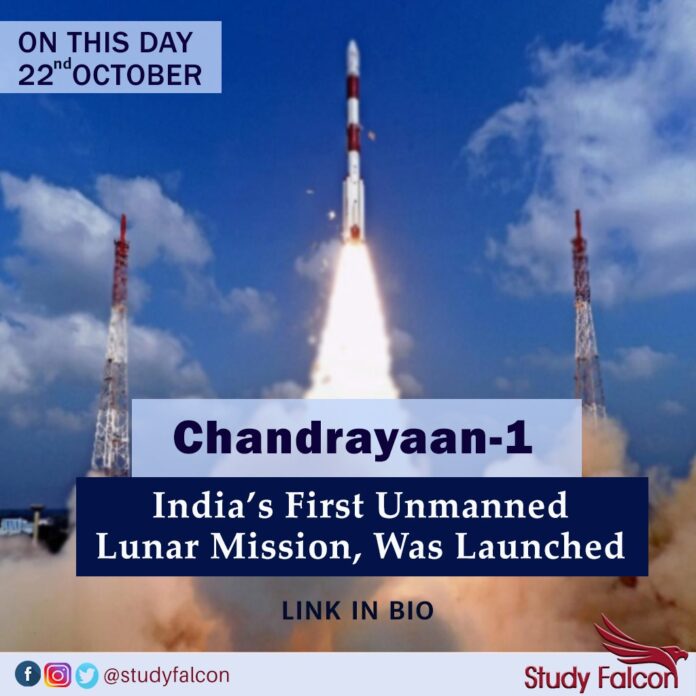India’s first unmanned lunar mission, Chandrayaan-1, was launched successfully on October 22, 2008 from SDSC SHAR, Sriharikota. The spacecraft was orbiting around the Moon at a height of 100 km from the lunar surface for chemical, mineralogical and photo-geologic mapping of the Moon.
Chandrayaan-1 was India’s first mission to the moon. It operated for almost a year (between October 2008 and August 2009). The lunar orbiter is best known for helping to discover evidence of water molecules on the moon.
Chandrayaan-1, India’s first mission to moon, was an unmanned spacecraft weighing 1380-Kg along with 11 scientific payloads built in India, UK, USA, Germany, Bulgaria and Sweden. The mission comprised an orbiter and an impactor. Launched successfully by the Indian Space Research Organisation (ISRO) on October 22, 2008, the spacecraft was designed to study the Moon orbiting around it at a height of 100 km from the lunar surface.
Chandrayaan-1 was launched aboard PSLV-C11 launch vehicle which successfully inserted the spacecraft into the lunar orbit on November 8, 2008. On November 14, 2008, MIP (Moon Impact Probe) was separated which struck the lunar South Pole in a controlled manner and India emerged as the fourth country in the world to hoist its flag on lunar surface. After almost a year due to several technical issues and contact failure on August 29, 2009, the ISRO officially declared the mission over. Chandrayaan operated for 312 days against the planned two years but was successful by achieving 95% of its planned objectives. Chandrayaan-1’s greatest discovery was the widespread presence of water molecules in the lunar soil.
The mission provided a major boost to the Indian space program as India effectively researched and indigenously developed the technology to explore the Moon. The main objectives of the mission were to: * Conduct various scientific experiments by the use of instruments on the spacecraft to yield data for studies * Prepare a 3-D atlas of both the far and near sides of the moon * Provide high-resolution chemical and mineral imaging of the entire surface of the moon * Gather information about lunar volatiles by observing X-ray spectrum in the energy range of 10-200 keV * Detect the presence of water on the moon.
Chandrayaan-1 was intended not only to be a demonstration of India’s technology in space, but also was expected to return scientific information about the moon, according to NASA. Its major goal was to collect data about the moon’s geology, mineralogy and topography.
Notably, Chandrayaan-1’s data helped determine the presence of water ice on the moon, which NASA announced in September 2009. The agency’s Moon Mineralogy Mapper detected evidence of a hydrogen-oxygen chemical bond (hinting at water or hydroxyl) when looking at the top area of the moon’s regolith (soil). The signal of water appeared to be stronger at the poles. After NASA’s announcement, ISRO said its Moon Impact Probe had also detected the signature of water on the moon, just before it impacted the surface.
The water signal was confirmed by other spacecraft observations. The Cassini spacecraft spotted the water/hydroxyl signal in 1999 while passing by the moon on its way to Saturn. And the Deep Impact spacecraft’s extended EPOXI mission examined the moon in infrared wavelengths (after a request from the M3 team). Deep Impact/EPOXI found the signal while making several flybys of the moon and Earth on its way to comet 103P/Hartley 2.
In March 2017, researchers located Chandrayaan-1 in a polar orbit that was about 200 kilometers (125 miles) above the lunar surface. The spacecraft’s orbit was about 180 degrees or half a cycle from orbital estimates in 2009. The team found the spacecraft using radar from NASA’s Goldstone Deep Space Communications Complex, with some follow-up work from the Arecibo Observatory in Puerto Rico.










